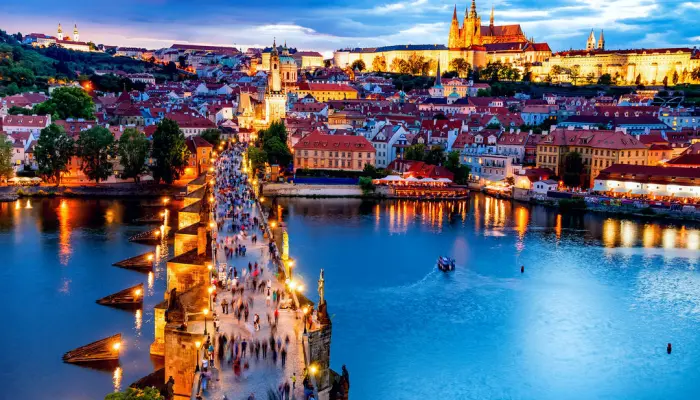Let's be clear – going to Prague means encountering beauty! Even to the most inexperienced tourist, the city will leave an indelible impression with its graceful architecture, inspiring landscapes along the Vltava River, the famous Charles Bridge... What to say about passionate enthusiasts of cultural and educational travels? They fall in love with Prague forever. That's what happens to them. As it becomes clear, Prague is among our top three favorite European cities, and we would always gladly return there to stroll along cobblestone streets, admire magnificent churches, bridges, and enjoy some beer...
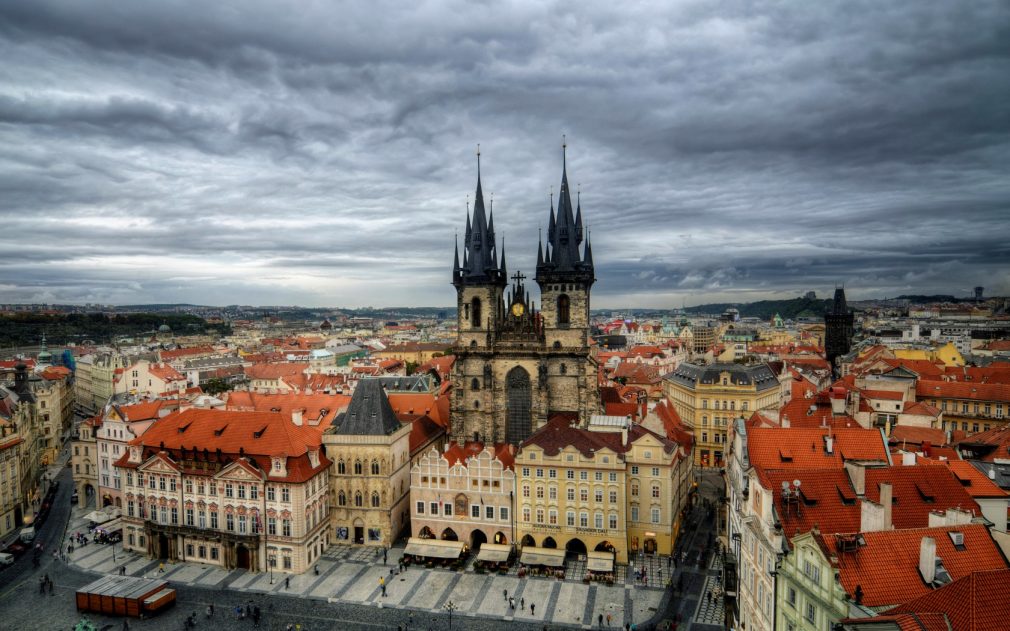
What can you see in Prague over the weekend? There are so many sights in this city that listing them all in advance is doomed to fail, so let's choose a route to the most famous and iconic places:
- Old Town Square (Staroměstské náměstí) in the center of Old Town – the heart of Prague. The Gothic Church of Our Lady before Týn (Týnský chrám), built in the 14th century, is one of its symbols, and further on is the Old Town Hall with the Astronomical Clock (Pražský orloj). The world's oldest functioning clock, dating back to 1410, attracts crowds of tourists every hour, eagerly awaiting to see the "Parade of Apostles." The square also features the Jan Hus Monument, and nearby is the magnificent Baroque Church of St. Nicholas (one of three churches in Prague dedicated to this saint). From the very beginning of our walk, the harmonious combination of buildings of completely different architectural styles – Gothic, Baroque, Renaissance... catches the eye! Continuing to explore the city, you'll only see more stylistic diversity!

- Municipal House (Obecní dům). Its elegant Art Nouveau style is a must-see during a stroll through Old Town. Built at the beginning of the 20th century on the site of the Royal Court and former residence of the King of Bohemia in the 14th century, the building is now a cultural and musical center, as well as home to exquisite restaurants and cafes. The most beautiful is considered the Smetana Hall concert and ballroom, while the Municipal Salon is the work of the Secession artist Alfons Mucha.
- Powder Tower (Prašná brána) – a Gothic tower built in the 15th century on one of the city gates leading to Old Town. You'll see it right next to the Municipal House. Until the 17th century, it was called the New Tower until it began storing gunpowder, hence its current name.
- Jewish Quarter Josefov (Josefov). This is one of the oldest Jewish quarters in Europe. In the ghetto formed in the 11th century in the very center of Old Town, all Jews were supposed to be isolated. Often the scene of pogroms and massacres, it began to flourish only by the end of the 16th century. It received its name much later, from Emperor Joseph II of the Holy Roman Empire, in 1850. At the beginning of the 20th century, much of the quarter was destroyed to fit into the new urban style, aspiring to imitate Paris. Six synagogues have been preserved, including the Old-New Synagogue, town hall, old Jewish cemeteries. Next to the Spanish Synagogue stands a bronze statue of writer Franz Kafka, and a memorial plaque is installed on his native house in the Jewish Quarter.
- Charles Bridge (Karlův most). This captivating bridge over the Vltava River, connecting Prague Castle with Old Town, is a true icon among Prague's landmarks. Begun in the 14th century and completed at the beginning of the next century, it was originally called the Stone Bridge. Magnificent Baroque sculptures of saints – thirty in total – were installed by the end of the 17th century, but those we see today are copies, with the originals stored in the National Museum. One of its three towers – the one on the Old Town side – is considered the pinnacle of Gothic art. Walking across the bridge among street musicians and artists offers an inspiring view of the Lesser Town, while the waters of the Vltava remind you to take a boat ride and admire the buildings from both sides of the river.
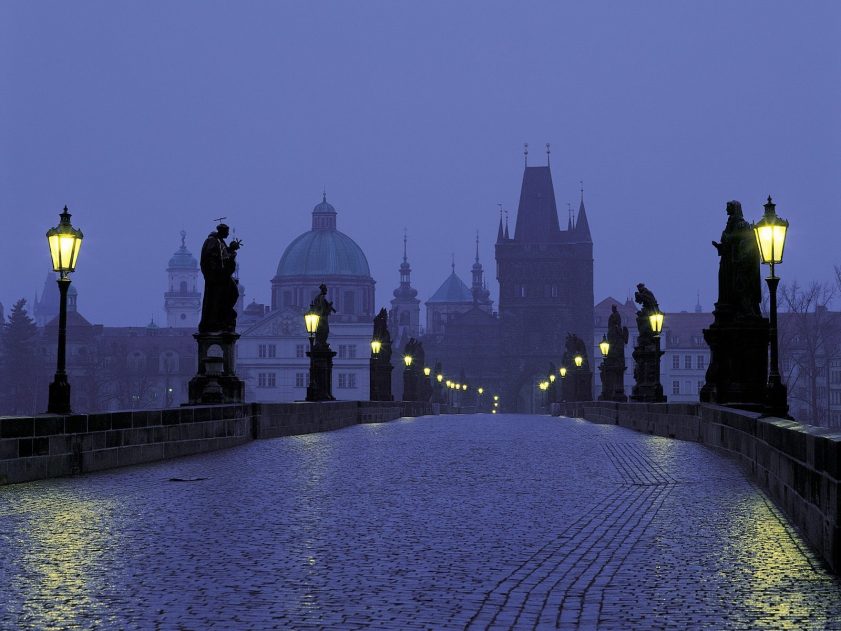
- Rudolfinum. This Neo-Renaissance building is located near Charles Bridge in Old Town. A cultural center with several exhibition halls for photography and contemporary art, it is best known as the home of the Czech Philharmonic. Many events of the Prague Spring – an international music festival – take place in its halls, with the "Dvořák Hall" being one of the oldest concert halls in Europe.
- Prague Castle (Pražský hrad). Perched on the hill of Hradčany above the Vltava, it is considered the largest palace complex in the world, covering over 7 hectares and including several palaces, gardens, a cathedral, several churches and monasteries, defensive towers. Hradčany served as the residence of Czech rulers from the 10th century and today is the residence of the country's president. Here, you can practically see all architectural styles of the last millennium. Walking around this area, you'll discover several museums and various art exhibitions. Among the most visited are the exhibition of modern art and decorative arts in the Renaissance Summer Palace (Letohrádek Královny Anny), as well as the exhibition of European classics in the Picture Gallery at the Castle (Obrazárna Pražského hradu). Don't miss the Golden Lane (Zlatá ulička), where writer Franz Kafka lived in house No. 22. In the past, this street was home to the houses and workshops of skilled goldsmiths, and now in their place, you'll find cute souvenir shops. From the platform in front of the entrance to the Castle, the city below looks magnificent, and looking at the sunlit rooftops, the nickname "Golden" Prague naturally emerges in association with the brilliant Golden Age of the time of Charles IV.
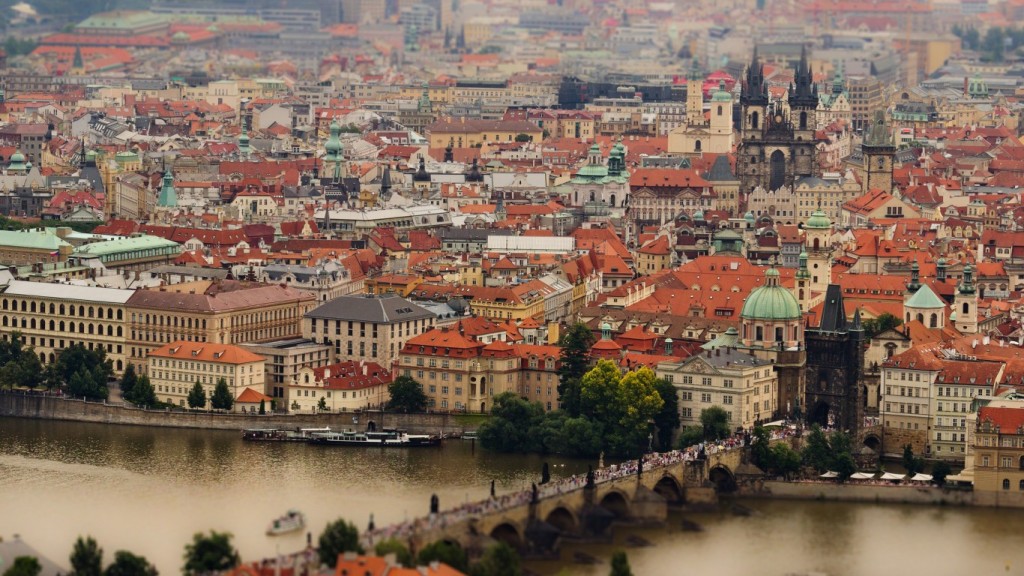
- St. Vitus Cathedral (Katedrála Sv. Víta). This Gothic cathedral is perhaps the most beautiful and majestic part of the Castle complex. Its construction began in the 14th century by the will of Charles IV, but it was only completed six centuries later. Many kings of Bohemia and emperors of the Holy Roman Empire are buried in St. Vitus Cathedral. Today, the cathedral looks perfect, and its most exquisite elements are the colored stained glass windows by Alfons Mucha and the sculptures by Josef Václav Myslbek, added at the beginning of the 20th century.
- Sternberg Palace (Šternberský palác) on Hradčany Square. It serves as an exhibition hall of the National Gallery with a collection of European classics from the 14th to the 18th centuries, including paintings by Goya, El Greco, Rembrandt, Van Dyck, and other masters.
- St. Nicholas Church in Malá Strana. Built in the 18th century, it is considered the most beautiful Baroque building in Prague. Concerts are often held here, and an interesting fact is that Mozart himself played the organ in it.
- National Museum in New Town. The Neo-Renaissance building on Wenceslas Square houses rich natural history and historical collections. Currently, the building is undergoing reconstruction, so it's advisable to check in advance if it's open to visitors and where its collections are temporarily housed.
- U Kalicha tavern (U Kalicha at Na Bojišti 12-14 in New Town). Fans of Jaroslav Hašek won't be able to miss it!
- "Dancing House" (Tančící dům). The unconventional appearance of the "Ginger and Fred House," as it's also called, entirely made of glass and steel, particularly contrasts with the historical buildings along the banks of the Vltava. Built between 1992 and 1996 through a joint project by architects Vlado Milunić and the famous Frank Gehry, this house undoubtedly adds even more uniqueness to the city's urban decor with its immense artistic charge.
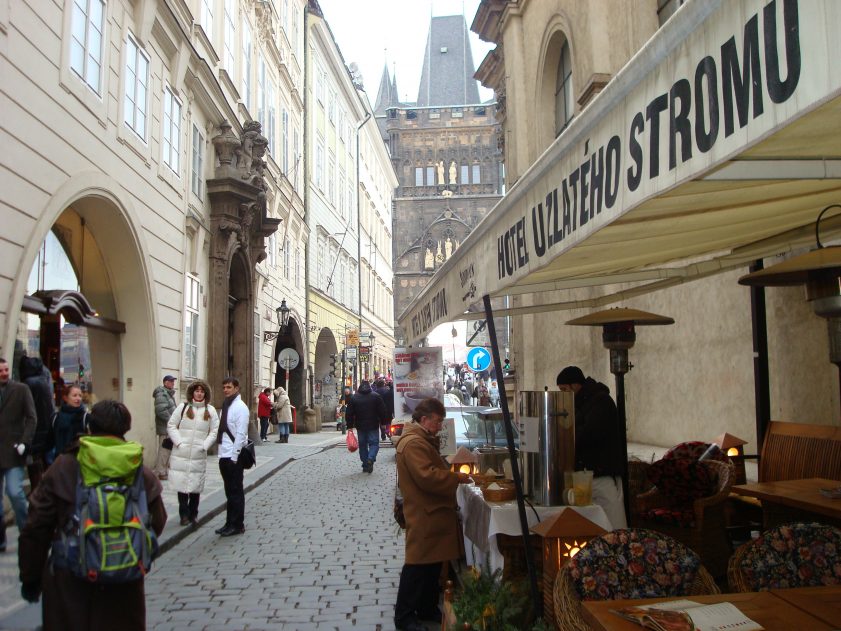
And with that, our walk through Prague concludes. But when you venture there and stroll through its ancient streets, you'll undoubtedly discover dozens more treasures of architecture, history, and art. Just enjoy them – and you'll return truly inspired from meeting one of the most majestic European capitals!
